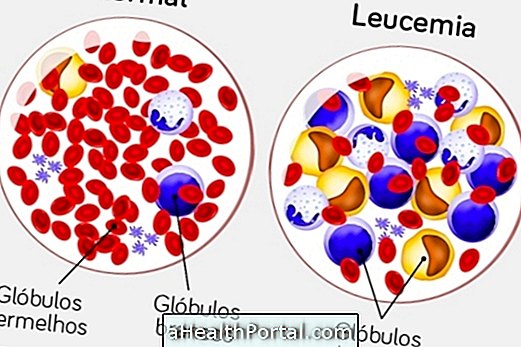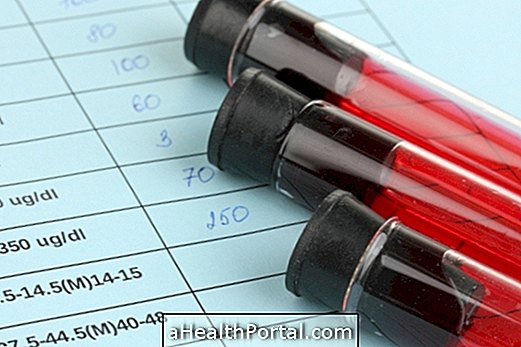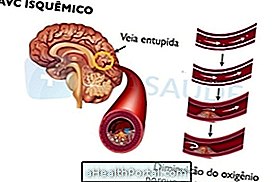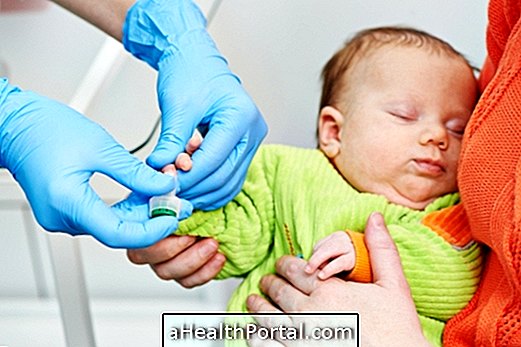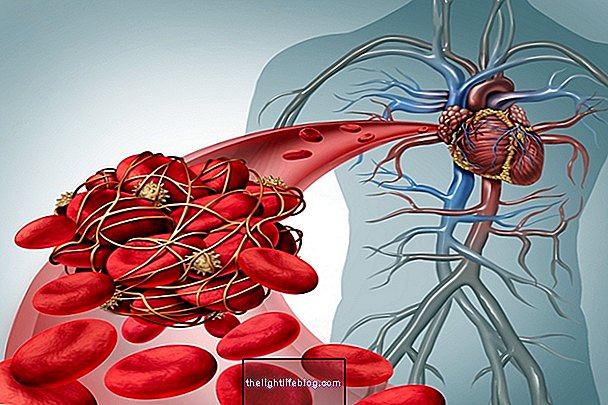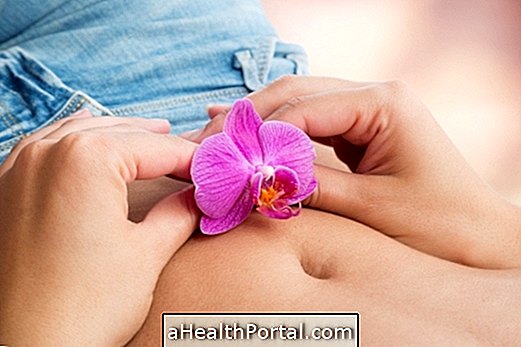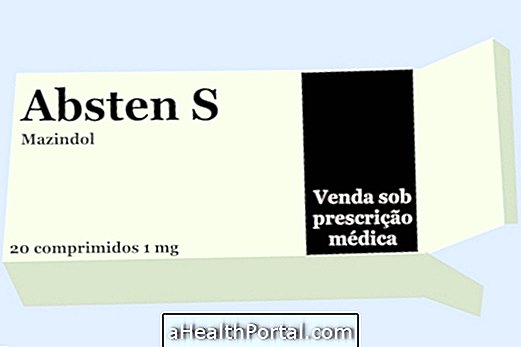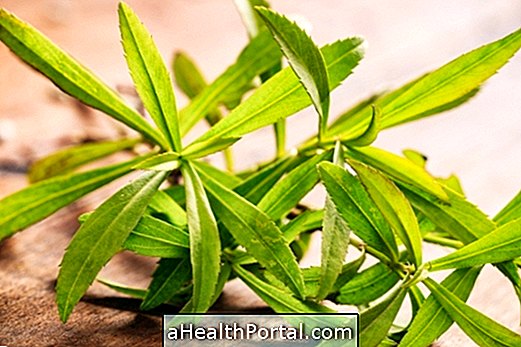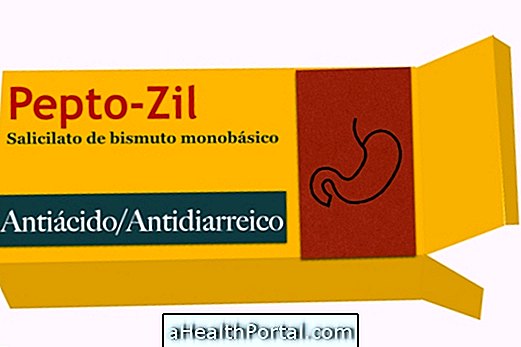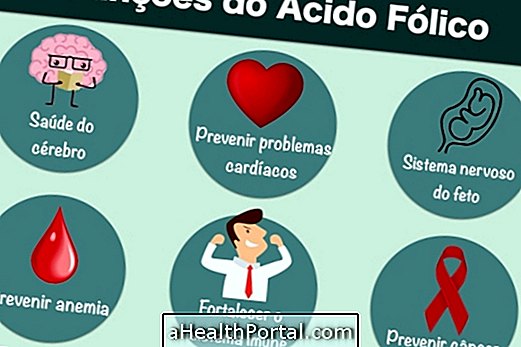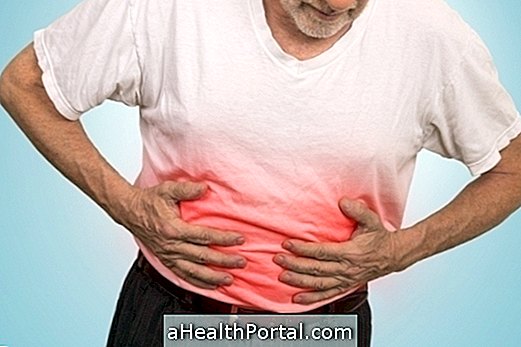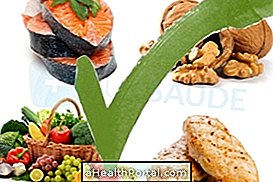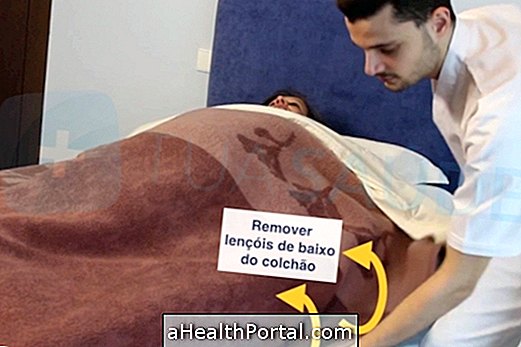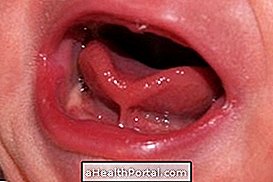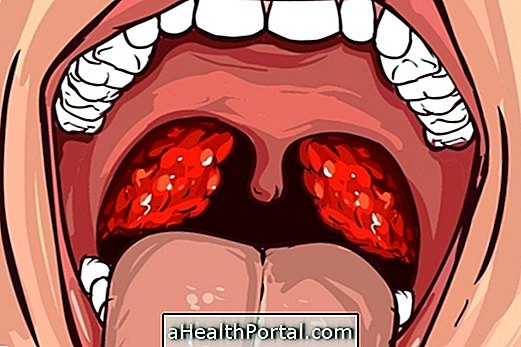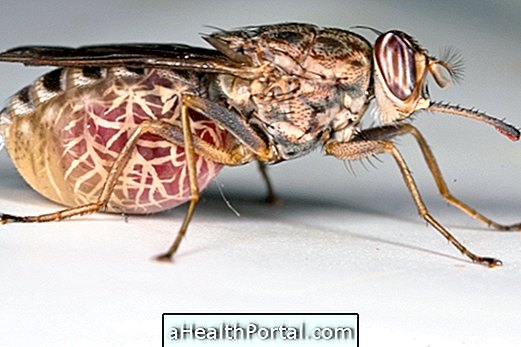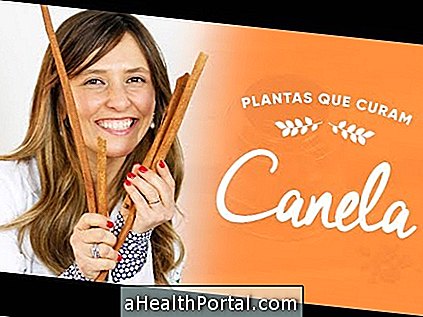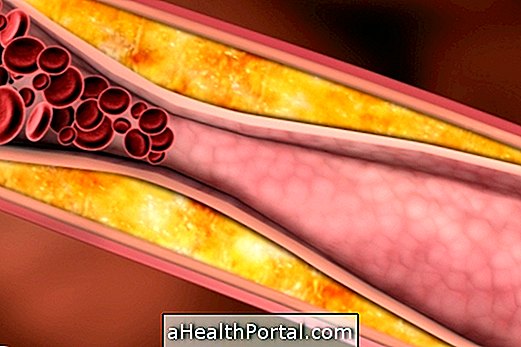The thick blood, scientifically known as hypercoagulability, happens when the blood becomes thicker than normal, occurring due to changes in the clotting factors, ultimately hindering the passage of blood in the blood vessels and increasing the risk of complications, such as stroke or thrombosis , for example.
The treatment of coarse blood can be done using anticoagulant drugs and a healthy diet, which must be prescribed by the general practitioner or hematologist in order to prevent the formation of clots and promote the person's quality of life.

Thick blood symptoms
The thick blood has no symptoms, but it can lead to the formation of clots, increasing the risk of them clogging some vessels and leading to the occurrence of some diseases, such as stroke, deep vein thrombosis or pulmonary embolism. Thus, the symptoms of coarse blood may vary according to the associated disease, the most common being:
- Pain and swelling in the legs, especially in the calves, usually on one side only, in the case of thrombosis;
- Change in the color of the skin on the leg, which may be indicative of thrombosis;
- Headache in case of stroke or stroke;
- Loss of strength in limbs and speech disorders due to stroke or stroke;
- Chest pain and difficulty breathing deeply in the case of pulmonary thromboembolism.
The diagnosis usually occurs when the patient has any of the above complications. In some cases, thick blood can be detected in routine laboratory tests, such as a coagulogram, which is a test much requested in preoperative consultations.
Possible complications
Thick blood is more common in people with obesity, a history of thrombosis in the family, pregnancy, use of oral contraceptives and in the period after some surgery, in addition to being present in patients with hematological diseases that lead to coagulation disorders. When the blood becomes thick, it can lead to the formation of clots, which can increase the risk of developing some diseases, such as:
1. Stroke
The thick blood can lead to the formation of clots and favor the occurrence of an ischemic stroke (stroke), for example, since there is a change in the blood flow to the brain due to the clot, which clogs the vessel and hinders the passage of blood with oxygen, resulting in damage to brain cells and the appearance of symptoms such as difficulty speaking or smiling, crooked mouth and loss of strength on one side of the body. Learn to recognize other symptoms of ischemic stroke.
If the characteristic symptoms of an ischemic stroke are identified, it is very important to call 192, emergency number in Brazil, or 112, emergency number in Portugal, to make an assessment, as soon as possible, of the person's situation. See what are the first aid for stroke.
2. Deep Venous Thrombosis (DVT)
The thick blood can lead to the formation of clots, which can lead to the clogging of a vein, preventing blood circulation and increasing the risk of thrombosis, which causes symptoms such as pain and swelling at the site, most often in the legs and changes in coloring of the spot on the skin. Check out other symptoms of deep vein thrombosis.

3. Pulmonary embolism
Pulmonary embolism occurs when a clot, which can be formed due to thick blood, blocks a blood vessel in the lungs, decreasing the flow of blood that reaches the lungs, which causes difficulty in breathing, shortness of breath, chest pain. , cough, increased heartbeat or dizziness.
If there are at least two of the symptoms of pulmonary embolism, it is recommended to go to the emergency room or call an ambulance so that the doctor can assess the symptoms and adapt the treatment as soon as possible, as it can lead to serious sequelae and lead to the death.
4. Acute myocardial infarction
Acute myocardial infarction, also known as a heart attack, happens when one of the arteries in the heart becomes clogged by a clot, which can be a consequence of thick blood. This prevents the transport of oxygen necessary for the heart muscles to work. Thus, the cardiac muscles do not work properly, leading to the appearance of symptoms such as severe and severe chest pain, which can radiate to the left arm, shortness of breath and dizziness.
In the presence of these symptoms, it is important to go to the nearest hospital or emergency room so that tests can be done to help identify the heart attack and, thus, initiate the most appropriate treatment.
5. Renal vein thrombosis
Renal vein thrombosis occurs when there is an obstruction of one or both renal veins, due to clots that may be due to thick blood, which results in kidney damage, causing sudden pain in the region between the ribs and the hip or presence of blood in the urine.

How is the treatment
The treatment for coarse blood should be indicated by the general practitioner or hematologist and aims to make the blood thinner, being indicated for this the use of anticoagulant drugs, such as warfarin, apixabo, clexane and xarelto, for example. These drugs should not be started without medical advice, as there may be an increase in the risk of major bleeding.
In addition, it is important that the person be careful with food, as it is possible that the treatment with drugs is more effective and it is possible to prevent the formation of other clots.
Food care
Feeding for coarse blood aims to improve blood circulation and prevent clot formation and, for this, it is recommended to consume foods rich in vitamin C, D, E and K, as these vitamins have anticoagulant effect. However, it is important that these foods are consumed according to the recommendation of the nutritionist, as consumption in high amounts can decrease the effectiveness of the remedies used, which can bring complications.
Thus, foods rich in these vitamins, such as acerola, orange, salmon, cod liver oil, sunflower seed, hazelnut, spinach and broccoli, should be part of the daily diet and consumed according to medical advice. Learn about other foods that help improve blood circulation.
In addition, during treatment with anticoagulants, it is important to be careful when consuming garlic, ginseng, horse chestnut, bilberry, guarana or arnica, as they can interact with the drugs and lessen their effect.
Was this information helpful?
Yes No
Your opinion is important! Write here how we can improve our text:
Any questions? Click here to be answered.
Email in which you want to receive a reply:
Check the confirmation email we sent you.
Your name:
Reason for visit:
--- Choose your reason --- DiseaseLive betterHelp another personGain knowledge
Are you a health professional?
NoMedicalPharmaceuticalsNurseNutritionistBiomedicalPhysiotherapistBeauticianOther
Bibliography
- BOOTH, Sarah L .; GOLLY, Ines; SACHECK, Jennifer; ROUBENOFF, Ronenn. Effect of vitamin E supplementation on vitamin K status in adults with normal coagulation status. American Journal of Clinical Nutrition. Vol 80. 1 ed; 143-148, 2004
- CAGNOLATI, DANIEL; SANKARANKUTTY, AJITH K .; ROCHA, JOÃO P. S. ET AL. Hemostasis and coagulation disorders. Available in: . Accessed on Dec 31 2020
- BANERJEE, Anindita; KHEMKA, Vineet K. Augmentation of anticoagulant effect with vitamin D: possible therapeutic target for venous thromboembolism. Int J Hematol Blo Dis. Vol 2. 1 ed; 1-5, 2017
- PORTUGUESE SOCIETY OF SURGERY. Recommendations for the Prevention of Venous Thromboembolism in Surgery. 2012. Available at:. Accessed on Dec 31 2020
- WASHINGTON STATE CLINICAL LABORATORY ADVISORY COUNCIL. Hypercoagulable State Practice Guidelines. 2010. Available at:. Accessed on Dec 31 2020
- TARGHER, Giovanni; PICHIRI, Isabella; LIPPI, Giuseppe. Vitamin D, Thrombosis, and Hemostasis: More than Skin Deep. Seminars in Thrombosis and Hemostasis. Vol 38. 1 ed; 114-124, 2012
- PROSCLAK, Mark P .; STAWICKI, Stanislaw P. Hypercoagulable states: A concise review. International Journal of Academic Medicine. Vol 3. 3 ed; 2017
- NATIONAL HEALTH SERVICE. Stroke. Available in: . Accessed on Dec 31 2020
- CEREBRAL VASCULAR ACCIDENT. Brazilian Society of Cerebrovascular Diseases. Available in: . Accessed on Dec 31 2020
- MAIA, Ernesto; LEVY, Roger A. Cancer and thrombosis: a literature review. Brazilian Journal of Cancerology. Vol 53. 2nd ed; 183-193, 2007
- ORRA, HUSSEIN A. Deep vein thrombosis. Available in: . Accessed on Dec 31 2020
- SILVA, A.S .; BRAZÃO, M.L .; GRANITO, S .; ESCÓRCIO, S. et al. Pro-thrombotic disorders / Thrombophilia. Portuguese Society of Internal Medicine. 2008
- TERRA-FILHO, M .; MENNA-BARRETO, S. S. et al. Recommendations for the management of pulmonary thromboembolism. J Bras Pneumol. Vol 36. 1 ed; 2010
- EUROPEAN CARDIOLOGY SOCIETY. Acute PE: Recommendations for the Diagnosis and Treatment of Acute Pulmonary Embolism. 2019. Available at:. Accessed on Dec 31 2020
- XIMENES, Ana Larissa P .; DAHER, Elizabeth F .; ROCHA, Francisco Eduardo S. et al. Recovery of renal function after episode of bilateral renal vein thrombosis as a complication of membranous glomerulopathy: case report. Braz. J. Nephrol. (J. Bras. Nefrol.). Vol 39. 4th ed; 477-480, 2017
- PORTUGUESE NUTRITION ASSOCIATION. Oral feeding and hypocoagulation. 2019. Available at:. Accessed on Dec 31 2020
- SATHLER, Plínio C .; LOURENÇO, André L .; SAITO, Max S .; ARÊAS, Ana P. G. et al. The antihemostatic profile of vitamin C: mechanisms that underlie the technical application of a physiological molecule. Arch Biol Sci. Vol 68. 2nd ed; 325-331, 2016
- LECHEVRETEL, Luvidine; SANTUCCI, Raoul; BURGIN-NOLL, Mélanie; CAILLE, Cécile et al. Effect of Vitamin E on the Anti-Coagulant Response. Global journal of Pharmacy & pharmaceutical Science. Vol 1.3 ed; 2017
- ARTENE, DIANA. Dietary supplements and herbal remedies affecting blood clotting. Available in: . Accessed on Dec 31 2020
- BOOTH, Sarah L .; GOLLY, Ines; SACHECK, Jennifer; ROUBENOFF, Ronenn. Effect of vitamin E supplementation on vitamin K status in adults with normal coagulation status. American Journal of Clinical Nutrition. Vol 80. 1 ed; 143-148, 2004
- BANERJEE, Anindita; KHEMKA, Vineet K. Augmentation of anticoagulant effect with vitamin D: possible therapeutic target for venous thromboembolism. Int J Hematol Blo Dis. Vol 2. 1 ed; 1-5, 2017
- TARGHER, Giovanni; PICHIRI, Isabella; LIPPI, Giuseppe. Vitamin D, Thrombosis, and Hemostasis: More than Skin Deep. Seminars in Thrombosis and Hemostasis. Vol 38. 1 ed; 114-124, 2012
